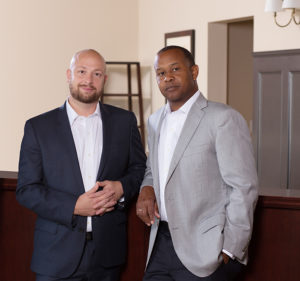 In legal terms, premises are buildings, land and other items that are considered property of a specific individual, group, or entity. Premises liability refers to the liability of premises owners for certain legal torts that occur on their property. A tort is defined as a civil wrong that causes unfair loss or harm to another individual. Premises liability may hold a landowner responsible for injuries that occur to an individual from hazardous conditions caused by the landowner’s negligence or other legally wrongful act.
In legal terms, premises are buildings, land and other items that are considered property of a specific individual, group, or entity. Premises liability refers to the liability of premises owners for certain legal torts that occur on their property. A tort is defined as a civil wrong that causes unfair loss or harm to another individual. Premises liability may hold a landowner responsible for injuries that occur to an individual from hazardous conditions caused by the landowner’s negligence or other legally wrongful act.
Types of Premises Liability Cases
Premises liability may apply to a number of incidents, such as:
- Defective stairways or escalators that lead to injury
- Dog bites and other animal attacks while on a premises
- Exposure to toxic chemicals or fumes
- Collapse of supportive items such as balconies, porches, and ceilings
- Assault, injury, or wrongful death caused by negligent security
- Swimming pool drowning or other accidents
- Accidents caused by failure to maintain or repair premises
- Accidents caused by housing or building code violations
Slip and Fall Accidents
Slip and fall accidents are a common type of premises liability case. During a slip and fall premises liability case, an individual incurs injury due to unsafe conditions of the premises in question. A slip and fall may be caused by conditions such as uneven surfaces, or slippery surfaces due to spilled or leaking substances.
Establishing Premises Liability
In order to file a lawsuit and pursue legal action against a landowner, injured individuals must establish that premises liability applies to the incident. There are three main prerequisites that must be established in order for premises liability to apply to a case. If these prerequisites cannot be established, the injured party may not pursue legal action for premises liability.
Defendant’s Possession of the Premises
It must be established that the defendant, or party against whom the lawsuit is filed, actually possesses the land, or “premises” on which the incident occurred. In addition to possession, the defendant must be legally responsible for the conditions of the property. Commercial properties are often leased to tenants. This may mean that the physical owner of the property does not necessarily control the property. Often, the leasing party is responsible for the maintenance and safety of the premises.
Plaintiff’s Right of Entry
It must be established that the plaintiff, or party bringing the lawsuit, was legally permitted to be on the premises in question. Legally permitted individuals include those who are invited or licensed to be on the premises. An invitee may be a member of the general public, or someone who was invited to the premises for business purposes.
A licensee is an individual who is granted a license that permits his or her presence on the premises. The protection of trespassers under premises liability remains a topic of legal debate. Trespassers are individuals who wrongfully interfere with a landowner’s possessory rights.
Defendant’s Negligence or Wrongful Act
The plaintiff must prove that negligence or another wrongful act occurred on the part of the landowner. It must also be proven that the plaintiff’s injury was a direct result of the defendant’s negligent or tortious actions. In recent years, premises liability has also extended to include tortious actions of a third party, such as an assault that occurs on the landowner’s property. These cases may be referred to as “third party premises liability.”
Determining Fault
In a premises liability case, the plaintiff is responsible for proving that the defendant is at fault for the injury or harm that occurred. The main basis for fault occurs when the conditions leading to the plaintiff’s injury are generally unreasonable. When entering a premise, a reasonable level of safety is expected. For example, spilled oil on a sidewalk is not a common occurrence.
Awareness of the Dangerous Condition
One way to determine fault is to prove that the defendant was aware or should have reasonably been aware of the dangerous condition which caused harm to the plaintiff. Once awareness is established, the plaintiff must prove that the landowner failed to give adequate warning of the risk or failed to correct the risk. If the premises in question were unmaintained when the injury occurred, negligence may be indicated.
Sources:
“Negligence as Basis for Recovery.” US Legal. US Legal, Inc.. Web. 19 Sep 2013. <http://premisesliability.uslegal.com/negligence-as-basis-for-recovery/>.
“Premises Liability.” New York City Bar. New York City Bar Association. Web. 19 Sep 2013. <http://www.nycbar.org/get-legal-help/legal-referral-service/practice-areas/negligence-and-personal-injury-law/premises-liability>.
